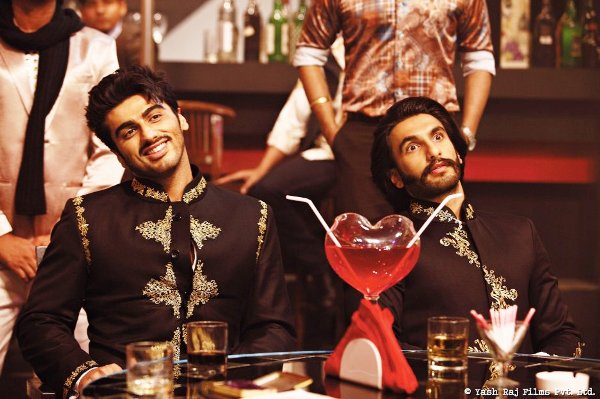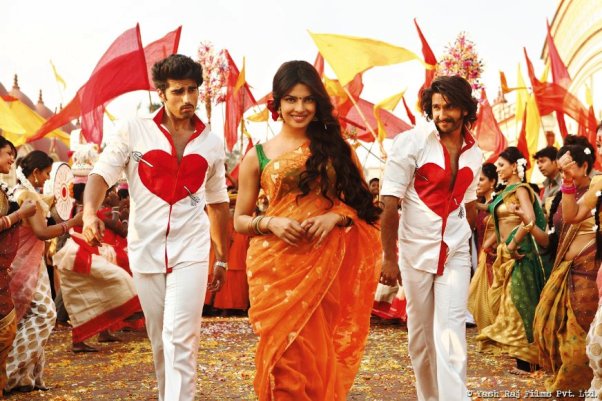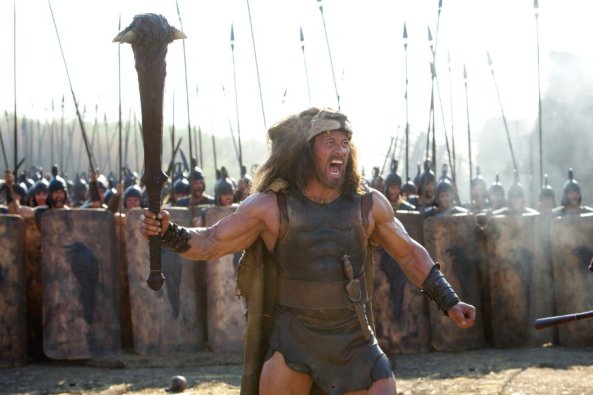
The Matrix versus Inception - our table stood divided at two all. The waitress was the deciding vote. Which would she choose? I handed her the tip, whispering Matrix, Matrix, Matrix, under my breath. “Inception. No doubt about it,” she answered. Considering the decade that has spanned between the films, you would be forgiven for thinking that the Matrix is a sci-fi film from a different generation to Inception and therefore incomparable, but you’d be wrong. Indeed when writer and director of the film Christopher Nolan was asked in a recent LA Times article whether or not Inception would be another second-life film akin to Avatar and Surrogates, he responded, "I think ours is of an older school ... more of The Matrix variety and the concepts of different levels of reality.” This comparison is not just a testament to the enduring quality of the Wachowski brothers’ trail-blazing 90’s film, but it is also a reflection of a similarly original concept and revolutionary effects in Inception. In both films we are Alice falling down the rabbit hole into metaphysical worlds of Neitsche and Jung, worlds where the very existence of reality is questioned and the boundaries between what is our perceived reality and what is actually real are blurred. The same overarching question is asked- which is better- living in ignorance in a false reality or surviving in the harsh real world? There is a common focus on an awakening of the human condition- a realisation that we have lost touch with reality, living our lives through devices rather than real interactions. The protagonists in both films straddle the boundaries between reality and fiction and between good and evil. Neo a hacker and Cobb an idea thief- are both dubious characters, on the fringes of society. But which is film is better? Cinematography: 1-0 to Inception. Both are beautifully shot and contain effects considered revolutionary for their time-‘bullet time’ in the Matrix and a CGI folding of Paris like a two dimensional map in Inception. We could argue that many of the special effects that make Inception visual eye-candy would not have been available around the time the Matrix was filmed which would make the two films visually incomparable. However, Nolan’s use of ‘practical methods’ wherever possible, the revolving hotel corridor scene used a set on steel I beam rings connected to electric motors with the actors on wires, make the film exceptional without extensive use of CGI. Script: 2-0 to Inception. The Matrix contains some of the most prolific lines in film history so much so that they have been parodied and imitated endlessly since its release. However, watching it last night, ten years later, I couldn’t help but giggle at some of the lines. There are scenes in which Keanu thinks out loud and lines such as ‘I know kung fu’ said in the inimitable way only Surfer-accented Reeves can, that date the film. The soundtrack doesn’t help either. While Inception contains conversations reminiscent of seminal moments from the Matrix (Cobb compares ideas to viruses in the same way Agent Smith compares humans to viruses) it does not fall into the cheesy one-liners sci-fi trap and contains momentous lines including the train riddle that are almost lyrical in their employ. And a killer soundtrack to boot. Plot: Inception-2, The Matrix-1. When Nolan created the idea of dream architects and an idea heist, he invented a world that is based in something we all know. While the Matrix is set in a futuristic world that has no real basis in our reality, Inception feeds off the idea that we all dream; we all know what it is to be dreaming- concepts such as dying in a dream causing you to wake up are well observed and cleverly placed into the storyline. This unites the audience. However, many other aspects of dreaming aren’t even considered. Nolan picks and chooses which aspects fit the storyline. While dreams bring the audience together, they also work against the believability of the film. We all dream in different ways and no one can truly depict what it is like to be in another’s dream. Add different dream layers to the mix and the complexity can overwhelm the viewer. Perhaps the quick pace of the film can deceive them as they watch, but afterwards they are left unsatisfied with the explanations they have been given. The Matrix, on the other hand, is a seamless film, both cinematically and in its linear story. It creates a battle between good and evil, computers versus humans and simplifies a complex sci-fi concept. The trade-off we are faced with is between imperfect complexity and flawless simplicity. The winner is... Only one movie has managed to include a complex emotional storyline into a sci-fi plot. Regardless of its flaws, Inception recreates the question we have all asked ourselves at some point: Is this really happening or am I dreaming? And, to be fair, only one film hasn’t been tainted by straight-to-DVD quality sequels. Inception wins. For now.









 Mrigdeep Singh Lamba’s Fukrey has mirrored the style established by Raju Hirani. There are multiple moments in the film where you have not fully recovered from your laughter when a new development in the story leaves your mind reeling with emotion. Having said that, like the predecessors of this method, Fukrey is primarily a comedy film, something like Delhi Belly with a Punjabi touch.
Mrigdeep Singh Lamba’s Fukrey has mirrored the style established by Raju Hirani. There are multiple moments in the film where you have not fully recovered from your laughter when a new development in the story leaves your mind reeling with emotion. Having said that, like the predecessors of this method, Fukrey is primarily a comedy film, something like Delhi Belly with a Punjabi touch.
 While the film follows the tried and tested mix of several directors, Fukrey neither bores the audience, nor does it seem repetitive.
The charm of Fukrey is boosted by its committed cast. The characters are detailed and fun. 'Bholi Punjaban', for example, carries a dappled personality: she is narcissistic and foul-mouthed with a 'Sindrella' tattoo on her neck. Meanwhile, the college watchman 'Pandit' - a kind, soft spoken yet corrupt guy, leaks exam papers, seeking backdoor registration for unqualified students in exchange for money. Both Richa Chadda and Pankaj Tripathi have handled their roles splendidly. Seeing Richa in a purely comic role after her intense acting in Gangs of Wasseypur was a joy. Similarly, Pankaj Triptahi’s role was a complete contrast to his performance in Gangs of Wasseypur, showing his adaptability as an actor.
While the film follows the tried and tested mix of several directors, Fukrey neither bores the audience, nor does it seem repetitive.
The charm of Fukrey is boosted by its committed cast. The characters are detailed and fun. 'Bholi Punjaban', for example, carries a dappled personality: she is narcissistic and foul-mouthed with a 'Sindrella' tattoo on her neck. Meanwhile, the college watchman 'Pandit' - a kind, soft spoken yet corrupt guy, leaks exam papers, seeking backdoor registration for unqualified students in exchange for money. Both Richa Chadda and Pankaj Tripathi have handled their roles splendidly. Seeing Richa in a purely comic role after her intense acting in Gangs of Wasseypur was a joy. Similarly, Pankaj Triptahi’s role was a complete contrast to his performance in Gangs of Wasseypur, showing his adaptability as an actor.
 The four protagonists of the film are also well-selected. While Ali Fazal as 'Zafar' is relatively unimpressive, the other three leads are hilarious. Pulkit Samrat, being the smart wizard, reminds you of 'Amar' from Andaz Apna Apna or 'Raju' of Hera Pheri - good at heart but willing to make easy money through shady means. Pulkit’s comic timing is spectacular and his chemistry with 'Choocha' is excellent. 'Choocha' on the other hand is a cross between 'Zach Galfianikis' of Hangover and 'Babu Bhaiyya' of Hera Pheri. He is spectacular when it comes to dreaming the lottery results but a certified idiot in all other respects. Still, he surprises you when it comes to his survival instincts. His scenes with Richa Chadda are utterly hilarious. Manjot Singh is also enjoyable in his role as 'Sardar Ji'. He portrays a nice guy who does not want to charge people who eat at his father’s shop yet wishes for admission into a college without having to study for it. He swears that he will teach a lesson to his cheating girlfriend but ends up waving and smiling at her.
The four protagonists of the film are also well-selected. While Ali Fazal as 'Zafar' is relatively unimpressive, the other three leads are hilarious. Pulkit Samrat, being the smart wizard, reminds you of 'Amar' from Andaz Apna Apna or 'Raju' of Hera Pheri - good at heart but willing to make easy money through shady means. Pulkit’s comic timing is spectacular and his chemistry with 'Choocha' is excellent. 'Choocha' on the other hand is a cross between 'Zach Galfianikis' of Hangover and 'Babu Bhaiyya' of Hera Pheri. He is spectacular when it comes to dreaming the lottery results but a certified idiot in all other respects. Still, he surprises you when it comes to his survival instincts. His scenes with Richa Chadda are utterly hilarious. Manjot Singh is also enjoyable in his role as 'Sardar Ji'. He portrays a nice guy who does not want to charge people who eat at his father’s shop yet wishes for admission into a college without having to study for it. He swears that he will teach a lesson to his cheating girlfriend but ends up waving and smiling at her.
 In the first fifteen minutes of the film, I thought that Fukrey will offer several smiles but fall short of making me laugh. I spent the next hour and a half laughing uncontrollably at the characters' antics. I highly recommended watching Fukrey!
Read more by Sami
In the first fifteen minutes of the film, I thought that Fukrey will offer several smiles but fall short of making me laugh. I spent the next hour and a half laughing uncontrollably at the characters' antics. I highly recommended watching Fukrey!
Read more by Sami 

 Source: IMDb[/caption]
Both, however, fall head over heels in love with Nandita (
Source: IMDb[/caption]
Both, however, fall head over heels in love with Nandita ( Source: IMDb[/caption]
Assistant Commissioner of Police (ACP) Satyajeet Sarkar (
Source: IMDb[/caption]
Assistant Commissioner of Police (ACP) Satyajeet Sarkar ( Source: IMDb[/caption]
The rest is a story encircled around disloyalty, weakness, aggression and deception.
[caption id="" align="aligncenter" width="602"]
Source: IMDb[/caption]
The rest is a story encircled around disloyalty, weakness, aggression and deception.
[caption id="" align="aligncenter" width="602"] Source: IMDb[/caption]
The chemistry between the lead actors Singh and Kapoor is flawless. Like the previous two hits,
Source: IMDb[/caption]
The chemistry between the lead actors Singh and Kapoor is flawless. Like the previous two hits,  Source: IMDb[/caption]
From
Source: IMDb[/caption]
From  Source: IMDb[/caption]
Priyanka Chopra, attired in multihued saris looks as beautiful as the typical Yash Chopra female lead usually is. She appears as a sensational dancer and a forthright woman in her pivotal role.
[caption id="" align="aligncenter" width="602"]
Source: IMDb[/caption]
Priyanka Chopra, attired in multihued saris looks as beautiful as the typical Yash Chopra female lead usually is. She appears as a sensational dancer and a forthright woman in her pivotal role.
[caption id="" align="aligncenter" width="602"] Source: IMDb[/caption]
Irrfan Khan’s spontaneous dialogue delivery and expressions when portraying a larger-than-life heroic role are
Source: IMDb[/caption]
Irrfan Khan’s spontaneous dialogue delivery and expressions when portraying a larger-than-life heroic role are  Source: IMDb[/caption]
Zafar’s Gunday has been packaged in just the right manner but the content is just not up to the mark. The artistic appeal could have been increased if a little more effort was put into the direction.
As a matter of fact, the story is neither electrifying nor awe-inspiring for the avid filmgoers. Although it is not badly written, the criss-cross of the characters is quite predictable as majority of the audience has already witnessed such twists in
Source: IMDb[/caption]
Zafar’s Gunday has been packaged in just the right manner but the content is just not up to the mark. The artistic appeal could have been increased if a little more effort was put into the direction.
As a matter of fact, the story is neither electrifying nor awe-inspiring for the avid filmgoers. Although it is not badly written, the criss-cross of the characters is quite predictable as majority of the audience has already witnessed such twists in  Source: IMDb[/caption]
The highlights of the movie are Singh and Kapoor’s superb chemistry, Khan’s crafty acting skills and the exceptional cinematography. Overall, it is an enjoyable treat for those moviegoers who love to watch loud, action and drama packed and romance filled movies with crispy dialogues and ‘Asalaame Ishqum’ type songs; all in two and a half hours.
[embed width="620"]http://vimeo.com/85367211[/embed]
In my opinion, Gunday deserves a rating of 2.5 out of 5, solely based on Singh, Kapoor and Khan’s performance.
Source: IMDb[/caption]
The highlights of the movie are Singh and Kapoor’s superb chemistry, Khan’s crafty acting skills and the exceptional cinematography. Overall, it is an enjoyable treat for those moviegoers who love to watch loud, action and drama packed and romance filled movies with crispy dialogues and ‘Asalaame Ishqum’ type songs; all in two and a half hours.
[embed width="620"]http://vimeo.com/85367211[/embed]
In my opinion, Gunday deserves a rating of 2.5 out of 5, solely based on Singh, Kapoor and Khan’s performance.

 Photo: IMDb[/caption]
The story is quite straightforward, where Hercules is asked by Lord Cotys of Thrace (
Photo: IMDb[/caption]
The story is quite straightforward, where Hercules is asked by Lord Cotys of Thrace ( Still of Rufus Sewell, Aksel Hennie, Dwayne Johnson, Ingrid Bolso Berdal and Reece Ritchie. Photo: IMDb[/caption]
To keep the story simple, the narrative explains that Hercules did complete the Twelve Labours, a feat that made him a legend. However, the story doesn’t dwell on these achievements. Only glimpses of his success were shown in the opening scenes of the movie, which set the pace with special effects of battle scenes shot to suit Herculean might. Though the movie is set in Greek times, one can relate the story to on-going modern day conflicts among countries and in particular regions, as Lord Cotys is aggressively pursuing to expand his kingdom while Hercules and his men are preventing him from doing so.
Ring any bells?
It was Lord Cotys’ daughter, Ergenia (
Still of Rufus Sewell, Aksel Hennie, Dwayne Johnson, Ingrid Bolso Berdal and Reece Ritchie. Photo: IMDb[/caption]
To keep the story simple, the narrative explains that Hercules did complete the Twelve Labours, a feat that made him a legend. However, the story doesn’t dwell on these achievements. Only glimpses of his success were shown in the opening scenes of the movie, which set the pace with special effects of battle scenes shot to suit Herculean might. Though the movie is set in Greek times, one can relate the story to on-going modern day conflicts among countries and in particular regions, as Lord Cotys is aggressively pursuing to expand his kingdom while Hercules and his men are preventing him from doing so.
Ring any bells?
It was Lord Cotys’ daughter, Ergenia ( Photo: IMDb[/caption]
In the previous versions of Hercules, it was portrayed that in time of need, Hercules would call upon his father, Zeus, for help. The ruler of Mount Olympus would send his soldiers or would change the weather to beat the enemy to save Hercules. However, in this version, since the demigod son is human, he must therefore complete all the tasks on his own. This, however, adds spice to the story, as the viewer’s know that Hercules will be in action this time and not Zeus.
[caption id="" align="alignnone" width="600"]
Photo: IMDb[/caption]
In the previous versions of Hercules, it was portrayed that in time of need, Hercules would call upon his father, Zeus, for help. The ruler of Mount Olympus would send his soldiers or would change the weather to beat the enemy to save Hercules. However, in this version, since the demigod son is human, he must therefore complete all the tasks on his own. This, however, adds spice to the story, as the viewer’s know that Hercules will be in action this time and not Zeus.
[caption id="" align="alignnone" width="600"] Photo: IMDb[/caption]
Johnson began preparing for the role months before the shooting began. Although he was always in top shape because of his wrestling career and later turned into an action star, he needed to go an
Photo: IMDb[/caption]
Johnson began preparing for the role months before the shooting began. Although he was always in top shape because of his wrestling career and later turned into an action star, he needed to go an  Photo: IMDb[/caption]
Ratner’s professional graph will take a giant leap for he has never done a movie based on a Greek character and his past projects belonged to the genre of fantasy, science fiction, comedy or drama. After directing X-Men: The Last Stand (2005), which wasn’t as big a success as the other movies of the
Photo: IMDb[/caption]
Ratner’s professional graph will take a giant leap for he has never done a movie based on a Greek character and his past projects belonged to the genre of fantasy, science fiction, comedy or drama. After directing X-Men: The Last Stand (2005), which wasn’t as big a success as the other movies of the  Photo: IMDb[/caption]
With a story as big as Hercules’, the running time of the movie is 98 minutes. Ratner and producers, Barry Levine and Beau Flynn have done a good job summing up the story with breath-taking action sequences within a time span of 100 minutes. The 3D effects bring action to life as Hercules’ weapons and his battles become prominent along with the special effects that are just what the viewers want to see.
[caption id="" align="alignnone" width="593"]
Photo: IMDb[/caption]
With a story as big as Hercules’, the running time of the movie is 98 minutes. Ratner and producers, Barry Levine and Beau Flynn have done a good job summing up the story with breath-taking action sequences within a time span of 100 minutes. The 3D effects bring action to life as Hercules’ weapons and his battles become prominent along with the special effects that are just what the viewers want to see.
[caption id="" align="alignnone" width="593"] Photo: IMDb[/caption]
Even though the film has action and a smooth story, it seems as if the sword wielding scenes were honed down for some reason. The movie is adapted from the graphic novel of the
Photo: IMDb[/caption]
Even though the film has action and a smooth story, it seems as if the sword wielding scenes were honed down for some reason. The movie is adapted from the graphic novel of the 

 Photo: Horns Official Facebook Page[/caption]
One morning, after Ig wakes up from a night of his drunken debauchery, he finds two small horns protruding from his forehead. At first, he thinks he might be hallucinating, but he is soon proven wrong. Ig expects people to be scared, or at least surprised by the sudden change in his appearance, but almost everyone seems to take his devilish horns at a face value.
Not only that – people begin to reveal their darkest, deepest, most sinister thoughts and secrets to him. People also begin to ask him for his permission to act upon those thoughts, as if he is the
Photo: Horns Official Facebook Page[/caption]
One morning, after Ig wakes up from a night of his drunken debauchery, he finds two small horns protruding from his forehead. At first, he thinks he might be hallucinating, but he is soon proven wrong. Ig expects people to be scared, or at least surprised by the sudden change in his appearance, but almost everyone seems to take his devilish horns at a face value.
Not only that – people begin to reveal their darkest, deepest, most sinister thoughts and secrets to him. People also begin to ask him for his permission to act upon those thoughts, as if he is the  Photo: Horns Official Facebook Page[/caption]
I have not read the book yet, but the movie has a very heavy religious undertone. There are quite a few references to
Photo: Horns Official Facebook Page[/caption]
I have not read the book yet, but the movie has a very heavy religious undertone. There are quite a few references to  Photo: Horns Official Facebook Page[/caption]
However, the movie has some serious lows. It got quite dull in some parts and some of its scenes didn’t seem to fit in with the rest.
The dullest parts of the movie were perhaps all the flashbacks. These flashbacks portrayed the beginning of Ig’s and Merrin’s relationship when they were young, and how they continued their relationship until the time of the girl’s death. These flashbacks were certainly very critical to the
Photo: Horns Official Facebook Page[/caption]
However, the movie has some serious lows. It got quite dull in some parts and some of its scenes didn’t seem to fit in with the rest.
The dullest parts of the movie were perhaps all the flashbacks. These flashbacks portrayed the beginning of Ig’s and Merrin’s relationship when they were young, and how they continued their relationship until the time of the girl’s death. These flashbacks were certainly very critical to the  Photo: Horns Official Facebook Page[/caption]
Even though I liked the movie, I wouldn’t recommend others to watch it. It was quiet enjoyable at first; I got hooked as soon as the movie began, but somewhere down the road it got a bit absurd. It just felt like one of those movies that have too many strong components that just don’t seem to fit together. Until and unless you like such kind of films or you are a Radcliffe fan, I wouldn’t recommend this film to you.
Horns was premiered at the
Photo: Horns Official Facebook Page[/caption]
Even though I liked the movie, I wouldn’t recommend others to watch it. It was quiet enjoyable at first; I got hooked as soon as the movie began, but somewhere down the road it got a bit absurd. It just felt like one of those movies that have too many strong components that just don’t seem to fit together. Until and unless you like such kind of films or you are a Radcliffe fan, I wouldn’t recommend this film to you.
Horns was premiered at the 
 Photo: IMDb[/caption]
Photo: IMDb[/caption]
 Photo: IMDb[/caption]
A film that is likely to make you laugh and cry at the same sitting, Life is Beautiful stays true to its title and gives you a truly beautiful film.
Set in Italy during the
Photo: IMDb[/caption]
A film that is likely to make you laugh and cry at the same sitting, Life is Beautiful stays true to its title and gives you a truly beautiful film.
Set in Italy during the  Photo: IMDb[/caption]
Photo: IMDb[/caption]
 Photo: IMDb[/caption]
Very rarely does one see a film that operates on the same level as
Photo: IMDb[/caption]
Very rarely does one see a film that operates on the same level as  Photo: IMDb[/caption]
Before
Photo: IMDb[/caption]
Before  Photo: IMDb[/caption]
One of the greatest films of the
Photo: IMDb[/caption]
One of the greatest films of the  Photo: IMDb[/caption]
Photo: IMDb[/caption]
 Photo: IMDb[/caption]
Photo: IMDb[/caption]
 Photo: IMDb[/caption]
An intimately persevering film about street life and racism in France,
Photo: IMDb[/caption]
An intimately persevering film about street life and racism in France,  Photo: IMDb[/caption]
Photo: IMDb[/caption]

 Photo: Shaan Taseer Facebook page[/caption]
Also, Qureshi, to stoop as low as to label a respected freelance journalist such as
Photo: Shaan Taseer Facebook page[/caption]
Also, Qureshi, to stoop as low as to label a respected freelance journalist such as  You go on to say,
You go on to say,
 Photo: Faisal Qureshi Facebook page[/caption]
Either you lack the capacity to understand the nuances of Talat’s eloquently written blog or you are deliberately painting him falsely as a ‘traitor of the state’ in order to bully him. I am sure you’ve seen some of the threats issued by your readers encouraged by your misleading words. These are people who fail to comprehend the written word, Qureshi, so it is your responsibility to at the very least to not mislead them.
From what I understand, Qureshi, you took selfies at a Gay Pride Parade in New York. As a believer in equal rights for all, I am proud of you. But any person could easily misrepresent your noble picture to win support in Pakistan.
[caption id="" align="alignnone" width="600"]
Photo: Faisal Qureshi Facebook page[/caption]
Either you lack the capacity to understand the nuances of Talat’s eloquently written blog or you are deliberately painting him falsely as a ‘traitor of the state’ in order to bully him. I am sure you’ve seen some of the threats issued by your readers encouraged by your misleading words. These are people who fail to comprehend the written word, Qureshi, so it is your responsibility to at the very least to not mislead them.
From what I understand, Qureshi, you took selfies at a Gay Pride Parade in New York. As a believer in equal rights for all, I am proud of you. But any person could easily misrepresent your noble picture to win support in Pakistan.
[caption id="" align="alignnone" width="600"] Photo: Faisal Qureshi Facebook page[/caption]
Isn’t that what you tried to do to Talat?
Think about it.
In the end, Qureshi, I am just disappointed. You are a
Photo: Faisal Qureshi Facebook page[/caption]
Isn’t that what you tried to do to Talat?
Think about it.
In the end, Qureshi, I am just disappointed. You are a 
 Photo: Rafay Mahmood[/caption]
Some films have to undergo a lot more hardship than Swaarangi when they do not receive a No Objection Certificate (NOC). Then the films have to go through another long process before they are actually submitted for certification anywhere.
1) A local film importer, also known as a distributor, submits an application to the heritage wing of the information ministry requesting the import of the particular film.
2) After receiving the application, the information ministry requests the CBFC for its comments on the film.
3) CBFC confirms the synopsis of the film from seven to eight sources and informs the board if the there is anything controversial in the film; this could mean anything from being anti- Pakistan, anti-Islam to overtly violent. The CBFC then submits that “apparently there is nothing controversial about the film.”
4) After getting these confirmations, the CBFC proposes that the information ministry give the NOC to the respective distributor. They propose it, they don’t recommend it.
5) After this, the information ministry writes to the commerce ministry to give an NOC for the custom clearance of the film, subject to it being submitted to the CBFC.
6) The film is imported and sent to the respective censor boards for certification and release.
It is imperative for us to understand that our censor boards are essentially on the right track. Their actions may appear to be wayward; however, they have exhibited the will to rectify errors. When
Photo: Rafay Mahmood[/caption]
Some films have to undergo a lot more hardship than Swaarangi when they do not receive a No Objection Certificate (NOC). Then the films have to go through another long process before they are actually submitted for certification anywhere.
1) A local film importer, also known as a distributor, submits an application to the heritage wing of the information ministry requesting the import of the particular film.
2) After receiving the application, the information ministry requests the CBFC for its comments on the film.
3) CBFC confirms the synopsis of the film from seven to eight sources and informs the board if the there is anything controversial in the film; this could mean anything from being anti- Pakistan, anti-Islam to overtly violent. The CBFC then submits that “apparently there is nothing controversial about the film.”
4) After getting these confirmations, the CBFC proposes that the information ministry give the NOC to the respective distributor. They propose it, they don’t recommend it.
5) After this, the information ministry writes to the commerce ministry to give an NOC for the custom clearance of the film, subject to it being submitted to the CBFC.
6) The film is imported and sent to the respective censor boards for certification and release.
It is imperative for us to understand that our censor boards are essentially on the right track. Their actions may appear to be wayward; however, they have exhibited the will to rectify errors. When 
 Photo: Singh is Bliing Facebook page[/caption]
If you are too big of a Kumar fan, caution is advised before reading further, because even Kumar couldn't save Singh Is Bliing from doom.
Photo: Singh is Bliing Facebook page[/caption]
If you are too big of a Kumar fan, caution is advised before reading further, because even Kumar couldn't save Singh Is Bliing from doom.
 Singh is Bliing Facebook page[/caption]
[caption id="" align="alignnone" width="508"]
Singh is Bliing Facebook page[/caption]
[caption id="" align="alignnone" width="508"] Photo: Singh is Bliing Facebook page[/caption]
Photo: Singh is Bliing Facebook page[/caption]
 Singh Is Bliing Facebook page[/caption]
Singh Is Bliing Facebook page[/caption]









